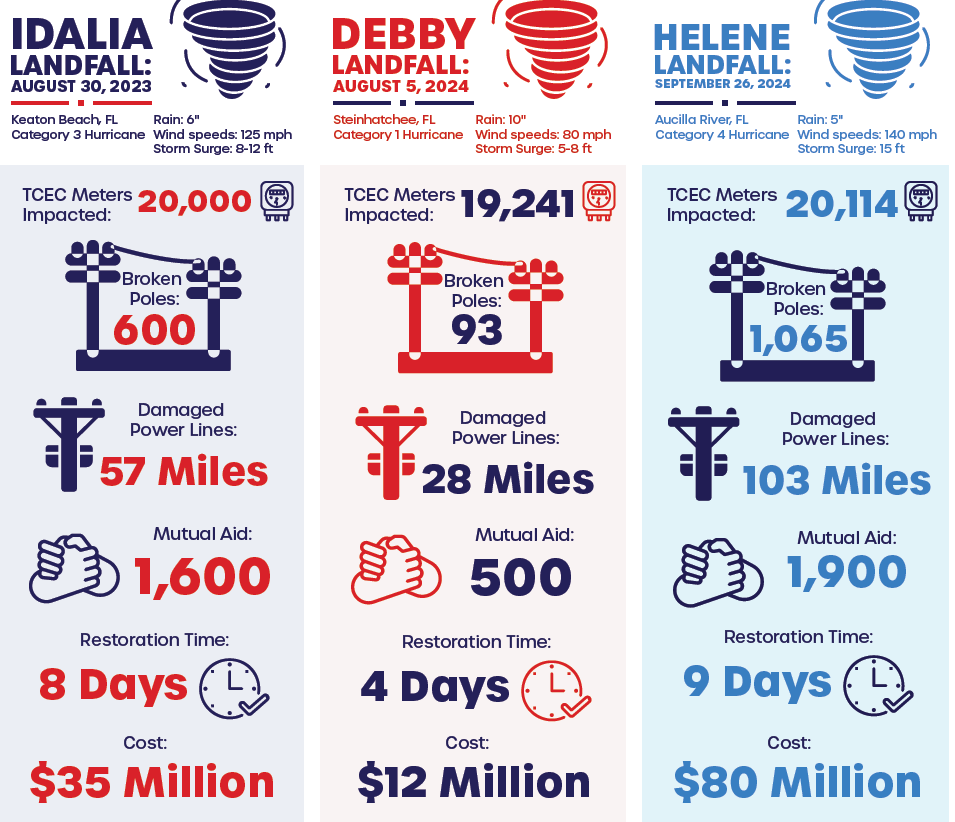The days of hurricane restoration are long, require many hands, and leave a significant financial burden not only on the individual members of the communities we serve but on Tri-County Electric Cooperative as well.
FEMA’s Public Assistance (PA) Program is the main source of federal disaster funding utilized by electric cooperatives after a disaster is declared under the authorities of the Stafford Act. TCEC is eligible for Public Assistance as a utility providing the “critical services” of electric power transmission and distribution.
The Public Assistance program is funded through FEMA’s Disaster Relief Fund. Under an emergency declaration, FEMA can provide direct federal and financial assistance for Emergency Work, which is debris removal and emergency protective measures to save lives and protect public health and safety, or protect improved property from damage.
Emergency Work includes emergency power restoration. Under a major disaster declaration, the President can authorize FEMA to provide the same assistance it authorizes under an emergency, but can also authorize Permanent Work. Permanent Work is the effort to repair, restore, reconstruct, or replace disaster-damaged roads, bridges, water control facilities, buildings and equipment, utilities, parks, recreational, and other publicly owned facilities. Permanent work includes the repair or replacement of disaster-damaged electric utilities to code.
Without this assistance to help manage storm response and recovery expenses from natural disasters, many co-op members living in disaster-stricken areas would face significantly higher electric rates.
This is a reimbursement program, so electric cooperatives must first show that they incurred the cost before they can draw down grant funds. This means that TCEC typically takes out loans to perform the work and then seeks reimbursement from FEMA. We perform work to repair or replace eligible facilities using our own employees, competitively awarded contracts, and mutual aid agreements. All costs to perform the FEMA-approved work must be reasonable and adequately documented. Unfortunately, this is a slow process that can take a few years to recover approved storm costs.
As of April 2025, TCEC has received just $17.8 million in FEMA reimbursements of the $35 million for Hurricane Idalia and $0 of the $92 million for Hurricane Debby and Hurricane Helene.
TCEC employees across all departments are working diligently with FEMA representatives to ensure proper documentation and submission of information to do our part in making the reimbursement process as smooth and efficient as possible.
Disaster relief funding is critical to restoring electric service after a natural disaster. Without this assistance, recovery time and expenses will increase drastically for small and rural communities, like ours, who can least afford it.
We’re asking FEMA to continue investing in rebuilding and resiliency.

